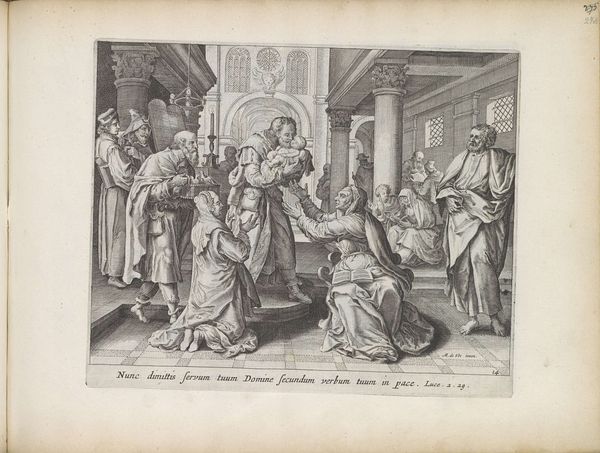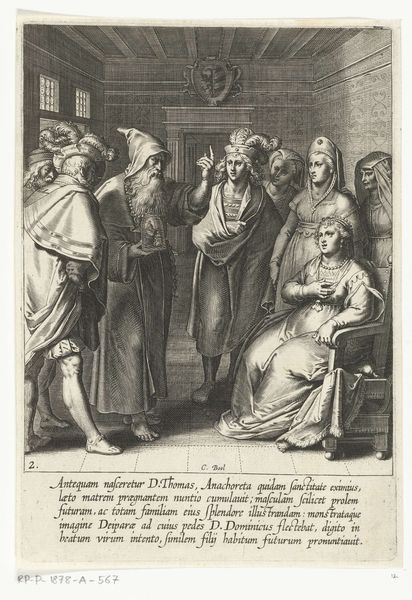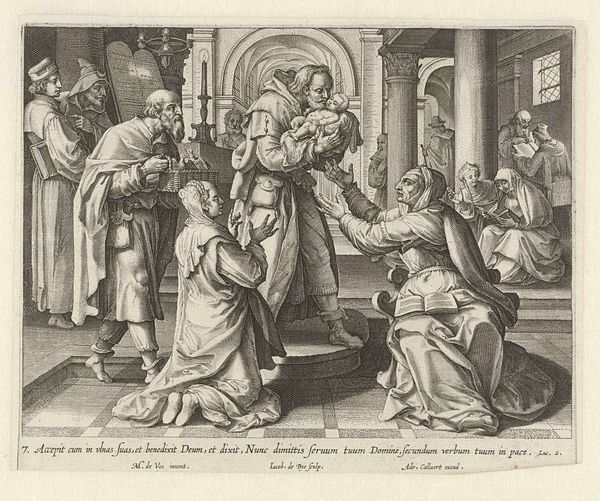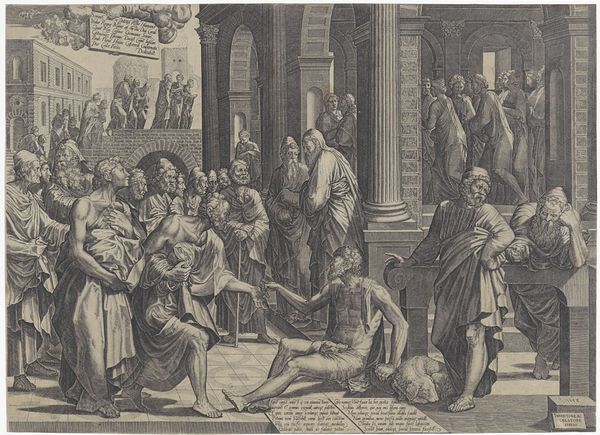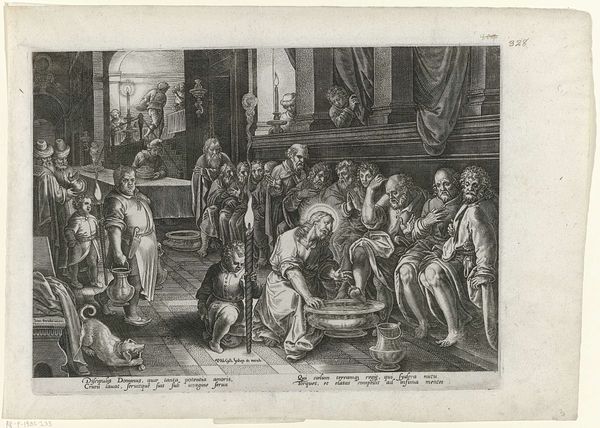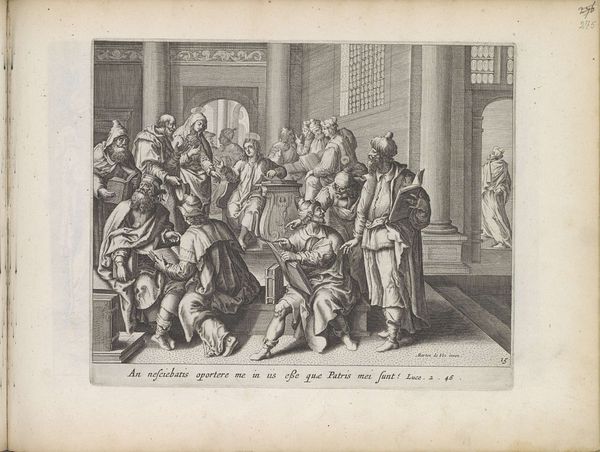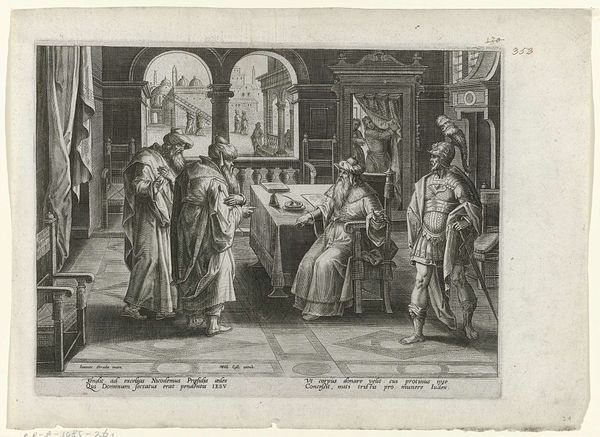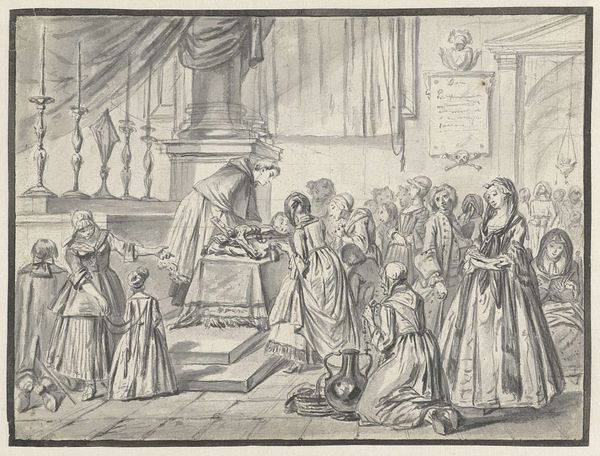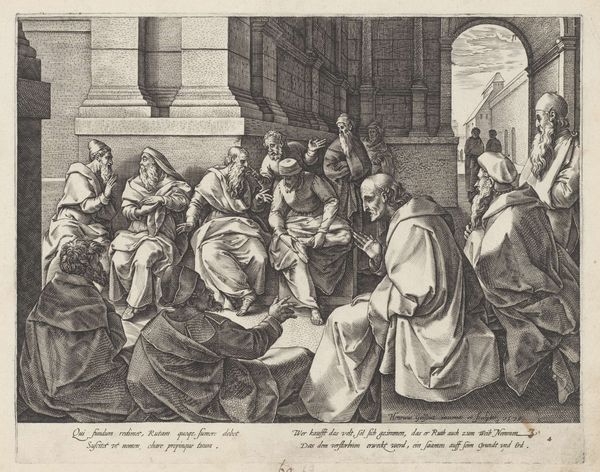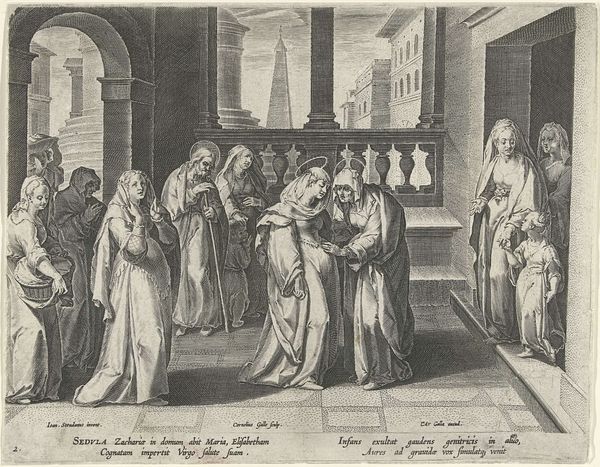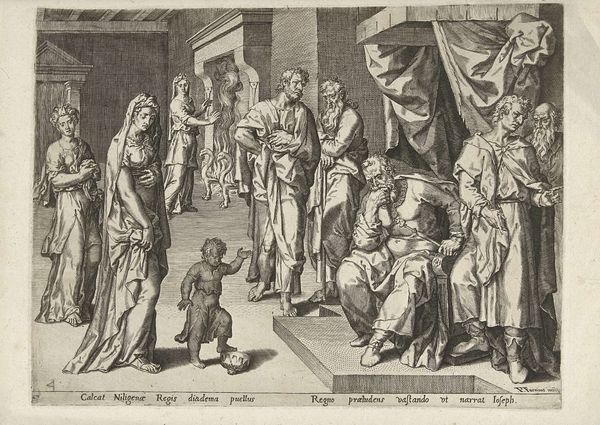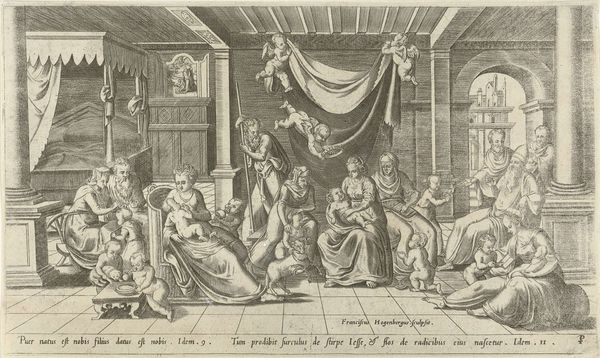
print, engraving
# print
#
old engraving style
#
mannerism
#
figuration
#
history-painting
#
engraving
Dimensions: height 200 mm, width 266 mm
Copyright: Rijks Museum: Open Domain
Curator: Here we have Philips Galle's "Maria en de apostelen rouwen om Christus," a somber engraving dating from 1547 to 1612, housed here at the Rijksmuseum. Editor: My initial reaction is drawn to the pervasive atmosphere of grief, rendered with intricate detail in the old engraving style. You can almost feel the heavy, still air. Curator: The scene itself offers potent symbols: Mary, central, surrounded by grieving apostles. We see recognizable iconography—gestures, poses that have signified sorrow and contemplation for centuries. The lamp in the lower right corner is an intriguing addition, often a symbol for seeking divine guidance in times of darkness, also related to funeral traditions and rites. Editor: Indeed. Let's not overlook the technical skill involved. Consider the production process. Galle, a master printmaker, used a metal plate, painstakingly carving lines to create these subtle variations in tone and texture. It’s a physical, laborious process demanding precision. The very act of making it mirrors, in some way, the suffering depicted, this slow methodical execution becomes intertwined with the image’s theme. Curator: That's insightful. There's a clear hierarchy present, both through the composition and the scale. Notice how Peter stands slightly apart, and Mary occupies the heart of the composition. These placements speak to their elevated status within the group and religious tradition. Galle, known for his Mannerist style, exaggerates certain elements—the elongated figures, the swirling drapery—all contributing to a heightened emotional intensity. Editor: This focus on drapery showcases a certain level of material fascination in Galle's world. The clothing almost takes on a life of its own. Note how the lines of grief pull our focus toward specific faces, linking individual loss into a communal expression of sadness. I am further intrigued by that background figure, a narrative presence almost like a spectral observer or representation of another actor from the Gospel's stories. Curator: An intriguing idea to suggest the figure relates directly to narrative presence as opposed to, say, merely an environment consideration. Looking at it from an iconographic point, its interesting that grief unites this community, binding them at their lowest. Even now, as viewers, we participate in this enduring story and visual vocabulary. Editor: For me, recognizing that manual creation grounds the image, makes its meaning much more resonant. Understanding this physical process, even the kind of ink and paper available at that moment, provides a concrete framework for engaging with this timeless scene of mourning. Curator: Yes, seeing how materials meet symbolism provides a richer reading of the engraving overall, leaving a powerful lasting effect.
Comments
No comments
Be the first to comment and join the conversation on the ultimate creative platform.
